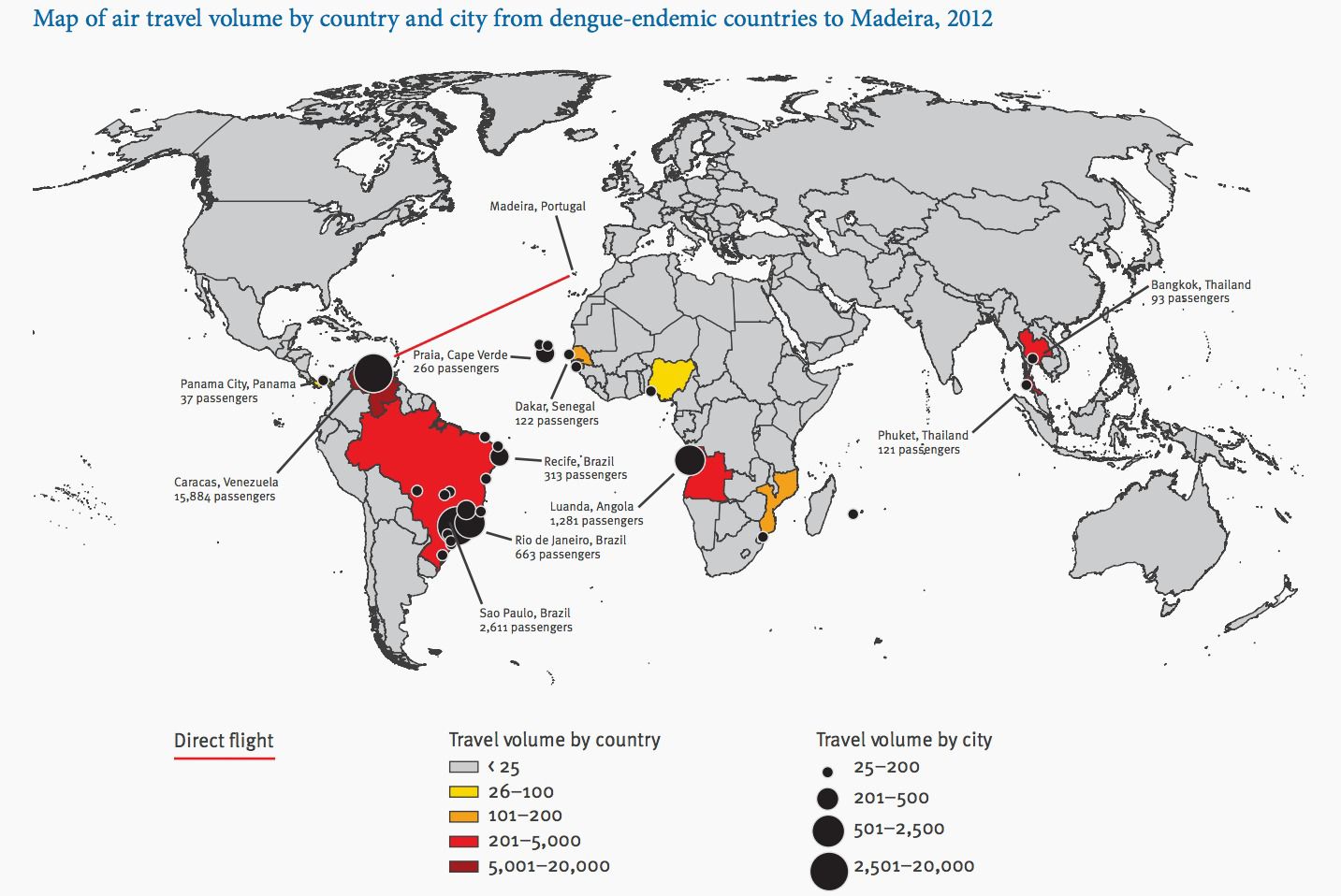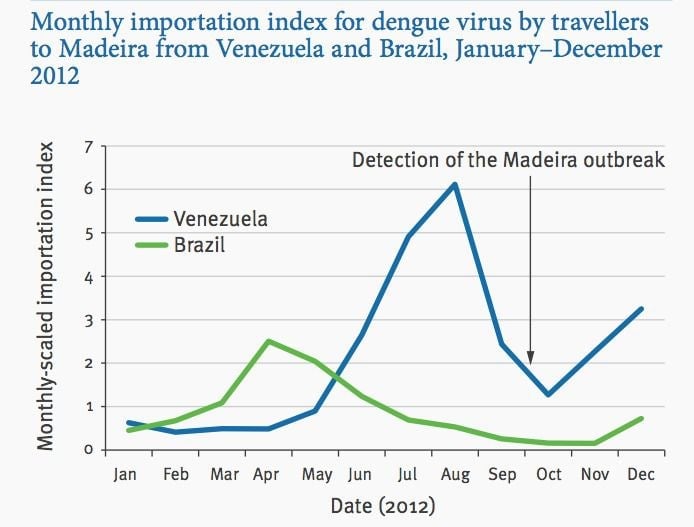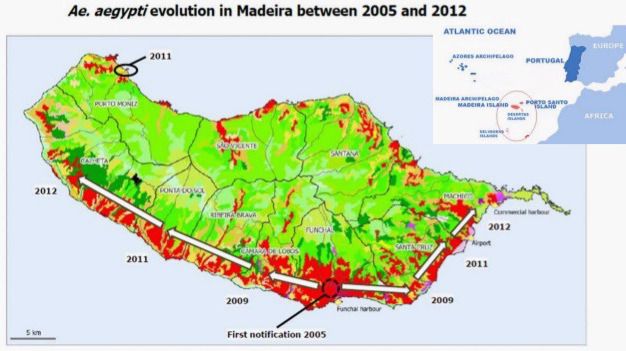The strange connection between Cristiano Ronaldo and a remote dengue fever outbreak
The dengue epidemic that hit the small Atlantic island of Madeira in October 2012 was Europe’s first sustained spread of the virus since the 1920s. Between then and Feb. 2013, more than 2,100 people on the Portuguese tourist hub were infected, and some 82 took the virus with them back to mainland Europe.


The dengue epidemic that hit the small Atlantic island of Madeira in October 2012 was Europe’s first sustained spread of the virus since the 1920s. Between then and Feb. 2013, more than 2,100 people on the Portuguese tourist hub were infected, and some 82 took the virus with them back to mainland Europe.
Break Dengue, a site funded by drug companies, NGOs, and other health groups, posits an unlikely potential factor in Madeira’s outbreak: global football star Cristiano Ronaldo. The epidemic’s origins trace back to a charter flight of tourists from Venezuela, according to Ana Clara Silva, an epidemiologist at Madeira’s health institute, who spoke at a recent infectious disease conference in London. Break Dengue’s Gary Finnegan noted that the tourists were quite possibly making a pilgrimage to the Portuguese soccer mega-star’s birthplace, as Ronaldo is a major tourist draw for Madeira.
In addition to his residence there, the island boasts a Cristiano Ronaldo museum, a huge bronze statue of him, and the flagship store for his fashion brand, CR7. Taxi drivers will reportedly take tourists on “the Ronaldo tour” upon request. Of course, the tourists could have also been visiting Madeira for its famed natural beauty and ancient wineries. In addition, Madeira and Venezuela maintain close ties thanks to the large migration of Madeirans to Venezuela during the 1960s.

But back to the dengue: The strain of the virus that spread in Madeira is common in Venezuela, Colombia, and northern Brazil (pdf). And of the 23,000 or so air travelers to the island in 2012 that came from countries with dengue, 90% hailed from either Brazil or Venezuela, according to recent research (pdf). While Brazil had a higher dengue incidence than Venezuela that year, more visitors came from the latter. Researchers estimate that at the time dengue arrived in Madeira, Venezuelans were nine times more likely than Brazilians to be carrying the virus. Three out of the five imported cases since the epidemic subsided in Feb. 2013 have been from Venezuela (link in Portuguese).

You can spread dengue without Ronaldo pilgrimages, but you generally can’t without Aedes aegypti, the mosquito species responsible for spreading the global dengue pandemic that infects nearly 400 million people and kills up to 26,000 a year.
Scientists first noticed Ae. aegypti on Madeira Island in 2005. Though authorities fogged the island with heavy-duty chemicals, the mosquito colonized more and more of the island.
Looking at its genes, scientists realized why it’s so impervious to the insecticide blitzkrieg: Madeira’s Ae. aegypti carries two insecticide-resistance genes.
In addition to making it tough to kill, that unique genetic variation also made the origins of Madeira’s Ae aegypti easier to trace. It turns out its ancestors likely hailed from Brazil or Venezuela. In Brazil, for instance, the local population of Ae. aegypti developed one of the mutations soon after authorities first began spraying the insecticides in 2001; within five years, the mutation had spread throughout Brazil’s Ae. aegypti population.

Though it’s impossible to know for sure, the first generation of Madeira’s Ae. aegypti might have arrived when one of these Brazilian (or possibly Venezuelan) mosquitoes laid its eggs in something stowed in the cargo hold of a plane headed for Madeira. Whether that plane was carrying Ronaldo fans, we’ll also never know.